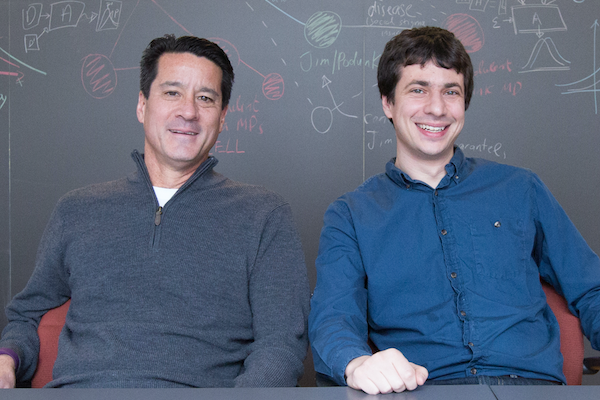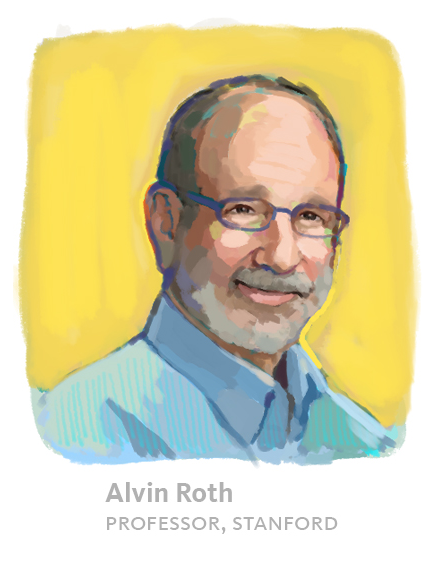Many stock exchanges earn rents by giving privileged access to high speed algorithmic traders. Why doesn't a new exchange enter the market with a design that would privilege price competition over speed competition? Budish, Lee and Shim have some thoughts on that:
Will the Market Fix the Market?A Theory of Stock Exchange Competition and Innovation
Eric Budish, Robin S. Lee and John J. Shim
February 27, 2019
Abstract As of early 2019, there are 13 stock exchanges in the U.S., across which over 1 trillion shares ($50 trillion) are traded annually. All 13 exchanges use the continuous limit order book market design, a design that gives rise to latency arbitrage—arbitrage rents from symmetrically observed public information—and the associated high-frequency trading arms race (Budish, Cramton and Shim, 2015). Will the market adopt new market designs that address the negative aspects of high-frequency trading? This paper builds a theoretical model of stock exchange competition to answer this question. Our model, shaped by institutional details of the U.S. equities market, shows that under the status quo market design: (i) trading behavior across the many distinct exchanges is as if there is just a single “synthesized” exchange; (ii) competition among exchanges is fierce on the dimension of traditional trading fees; but (iii) exchanges capture and maintain significant economic rents from the sale of speed technology—arms for the arms race. Using a variety of data, we document seven stylized empirical facts that align with these predictions. We then use the model to examine the private and social incentives for market design innovation. We show that the market design adoption game among exchanges is a repeated prisoner’s dilemma. If an exchange adopts a new market design that eliminates latency arbitrage, it would win share and earn economic rents; perhaps surprisingly, the usual coordination problems associated with getting a new market design off the ground are not central. However, imitation by other exchanges would result in an equilibrium that resembles the status quo with competitive trading fees, but now without the rents from the speed race. We conclude that although the social returns to adoption are large, the private returns are much smaller for an entrant exchange and negative for an incumbent that currently derives rents from the inefficiencies that the new design eliminates. Nevertheless, our analysis does not imply that a market-wide market design mandate is necessary. Rather, it points to a more circumscribed policy response that would tip the balance of incentives and encourage the “market to fix the market.”
Will the Market Fix the Market?A Theory of Stock Exchange Competition and Innovation
Eric Budish, Robin S. Lee and John J. Shim
February 27, 2019
Abstract As of early 2019, there are 13 stock exchanges in the U.S., across which over 1 trillion shares ($50 trillion) are traded annually. All 13 exchanges use the continuous limit order book market design, a design that gives rise to latency arbitrage—arbitrage rents from symmetrically observed public information—and the associated high-frequency trading arms race (Budish, Cramton and Shim, 2015). Will the market adopt new market designs that address the negative aspects of high-frequency trading? This paper builds a theoretical model of stock exchange competition to answer this question. Our model, shaped by institutional details of the U.S. equities market, shows that under the status quo market design: (i) trading behavior across the many distinct exchanges is as if there is just a single “synthesized” exchange; (ii) competition among exchanges is fierce on the dimension of traditional trading fees; but (iii) exchanges capture and maintain significant economic rents from the sale of speed technology—arms for the arms race. Using a variety of data, we document seven stylized empirical facts that align with these predictions. We then use the model to examine the private and social incentives for market design innovation. We show that the market design adoption game among exchanges is a repeated prisoner’s dilemma. If an exchange adopts a new market design that eliminates latency arbitrage, it would win share and earn economic rents; perhaps surprisingly, the usual coordination problems associated with getting a new market design off the ground are not central. However, imitation by other exchanges would result in an equilibrium that resembles the status quo with competitive trading fees, but now without the rents from the speed race. We conclude that although the social returns to adoption are large, the private returns are much smaller for an entrant exchange and negative for an incumbent that currently derives rents from the inefficiencies that the new design eliminates. Nevertheless, our analysis does not imply that a market-wide market design mandate is necessary. Rather, it points to a more circumscribed policy response that would tip the balance of incentives and encourage the “market to fix the market.”





